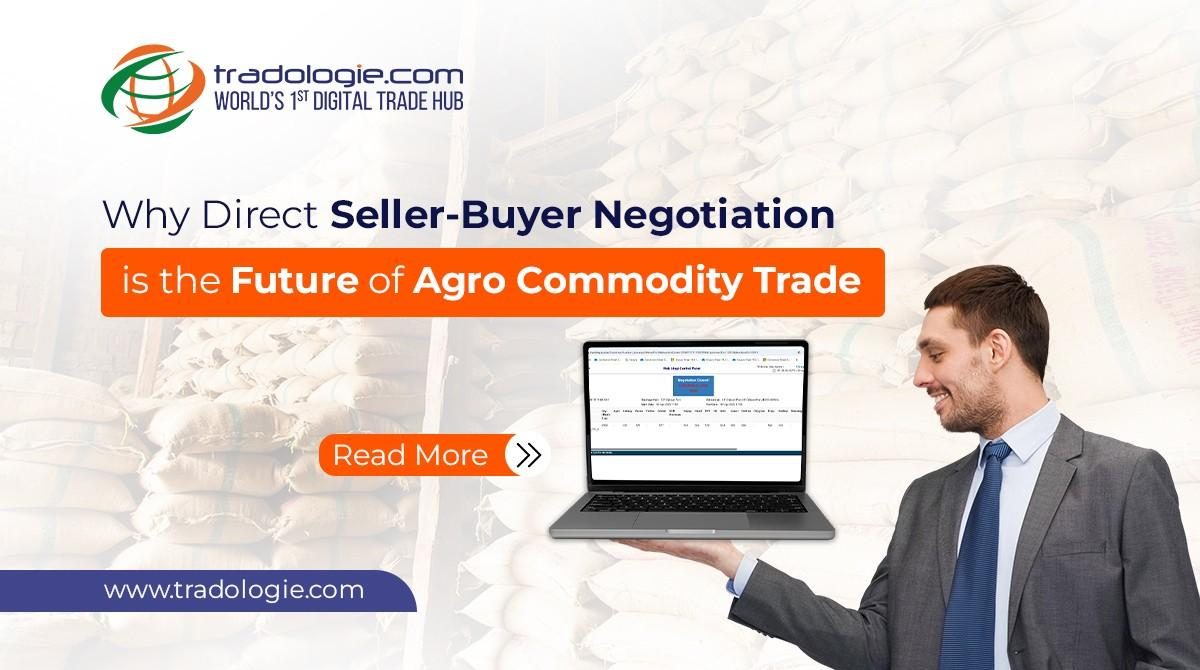Introduction
For decades, agro commodity trade has relied on middlemen to bridge the gap between buyers and sellers. This approach often introduced inefficiencies, miscommunication, and higher costs. With growing digital connectivity and access to online trading platforms, a new trend is reshaping the industry: direct negotiation between sellers and buyers.
This blog explores why direct communication is gaining traction in the agro trade sector, the benefits it brings, and how it’s likely to define the future of global agricultural trade.
Why the Shift Toward Direct Negotiation?
Thanks to widespread internet access and the rise of digital B2B platforms, agro traders are now empowered to communicate directly. In India alone, over ₹3 trillion (~USD 36 billion) worth of agricultural commodities were traded digitally in FY 2023‑24, showing the growing confidence in online trading.
Direct negotiation removes the dependency on intermediaries, enabling buyers and sellers to engage in transparent, timely, and informed decision-making.
Key Benefits of Direct Buyer-Seller Negotiation in Agro Trade
1. Elimination of Middlemen
Direct negotiation minimizes the need for third-party agents. This reduces the cost and confusion that often come with extra layers of communication. Buyers and sellers can now discuss terms, expectations, and concerns directly.
2. Enhanced Transparency
When the involved parties communicate without an intermediary, there is less risk of information distortion. This leads to greater trust and a clear understanding of trade terms. Transparency has shown to reduce price manipulation and increase fair practices in digital marketplaces.
3. Improved Communication
Clear and uninterrupted communication strengthens the relationship between both parties. Issues such as product specifications, payment terms, and delivery schedules can be addressed more accurately and efficiently.
4. Stronger Relationships
Without relying on a third party, both buyers and sellers gain firsthand experience interacting with each other. This leads to better rapport, clearer expectations, and long-term partnerships built on mutual understanding.
5. Faster Transactions
By cutting out intermediaries, deals can be finalized more quickly. Responses are faster, decisions are more direct, and the time spent coordinating across multiple channels is reduced.
6. Secure and Traceable Payments
Most digital platforms offer multiple secure payment options such as UPI, NEFT, and RTGS. Every transaction is documented and traceable, reducing the chances of fraud.
7. Quality Assurance
Sellers can offer pre-shipment quality inspection by certified third-party agencies, assuring buyers of the product quality. This increases buyer confidence and reduces post-sale disputes.
8. Fully Digital Workflow
The entire trading process—from initial inquiry to payment—can now be completed online. This eliminates the need for manual processes, speeds up transactions, and offers better record-keeping.
9. Cost Efficiency
Digital trading significantly lowers operational costs. There’s no need for physical meetings or travel, making the process more accessible and affordable for traders of all sizes.
10. Built-In Support
Many platforms provide user assistance through help centers or customer service representatives. This allows traders to resolve queries and issues without external help.
11. Digital Audit Trail
Every step in the digital trade journey is logged, offering a secure and verifiable history of the transaction. This supports accountability and dispute resolution.
Conclusion
The future of agro commodity trade is being reshaped by the shift to direct negotiation between buyers and sellers. This approach promotes transparency, efficiency, and trust, while significantly reducing costs and risks. As digital infrastructure continues to improve, we can expect this model to become the new norm across global agricultural trade networks.
Author Bio:
Navneet Chauhan is a digital marketing strategist focused on B2B agro trade and global commodity trends. He writes about trade innovation, digital supply chains, and eCommerce in agriculture.
